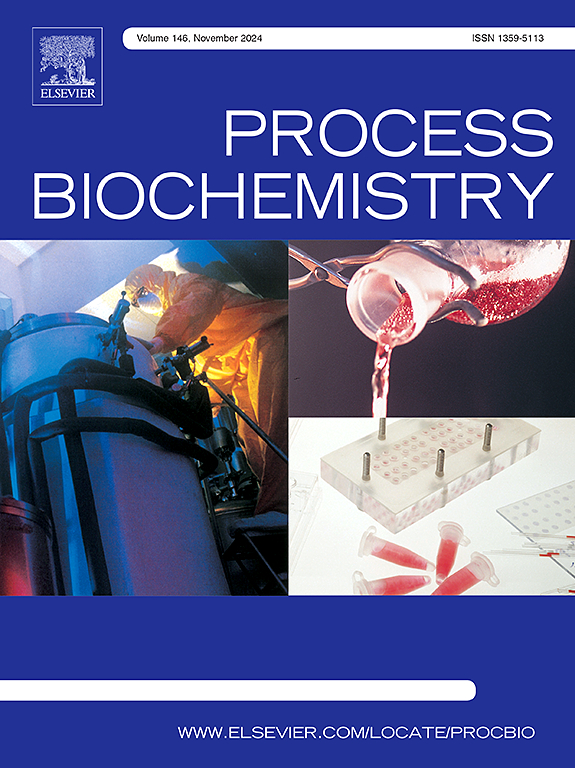Construction of dynamic down-regulation systems in Clostridium tyrobutyricum for butyrate production
IF 3.7
3区 生物学
Q2 BIOCHEMISTRY & MOLECULAR BIOLOGY
引用次数: 0
Abstract
The acetate biosynthesis pathway is an important component of central carbon metabolism, providing adenosine triphosphate (ATP) and acetate for cell growth. However, enhanced acetate production tends to be toxic to the cell and inhibits butyrate production by Clostridium tyrobutyricum. In this study, we evaluated the expression strength of 22 endogenous promoters, whose expression levels ranged from 4.4 % to 121 % of the strong promoter Pthl. By integrating the endogenous promoters with 8 degradation tag mutants, we obtained the optimal combination of PsigK-LAA+ 4 after evaluating the constructed dynamic down-regulation systems. PsigK-LAA+ 4 was used for the dynamic downregulation of the acetate branch pathway to improve butyrate production. Although the titers, yields and selectivity of butyrate production were not improved significantly, productivities of PsigK-pta-ack-LAA+ 4 and PsigK-pta-LAA+ 4-ack were increased by 84 % and 121 %, due to the shortened fermentation period and higher tolerance to acetate. Additionally, downregulating the acetate branch pathway in the logarithmic growth phase and overexpressing key enzymes involved in the acetate branch pathway in the stationary phase could effectively mitigate acetate toxicity and improve butyrate production. To our knowledge, this study is the first to report the dynamic downregulation systems in C. tyrobutyricum, providing potential regulation strategies for biofuel production in the future.
求助全文
约1分钟内获得全文
求助全文
来源期刊

Process Biochemistry
生物-工程:化工
CiteScore
8.30
自引率
4.50%
发文量
374
审稿时长
53 days
期刊介绍:
Process Biochemistry is an application-orientated research journal devoted to reporting advances with originality and novelty, in the science and technology of the processes involving bioactive molecules and living organisms. These processes concern the production of useful metabolites or materials, or the removal of toxic compounds using tools and methods of current biology and engineering. Its main areas of interest include novel bioprocesses and enabling technologies (such as nanobiotechnology, tissue engineering, directed evolution, metabolic engineering, systems biology, and synthetic biology) applicable in food (nutraceutical), healthcare (medical, pharmaceutical, cosmetic), energy (biofuels), environmental, and biorefinery industries and their underlying biological and engineering principles.
 求助内容:
求助内容: 应助结果提醒方式:
应助结果提醒方式:


